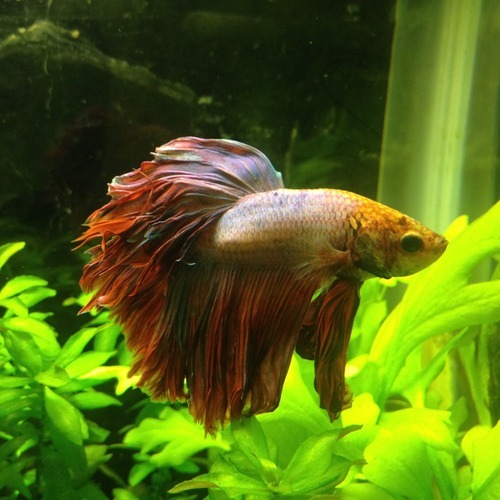
Betta splendens (more commonly known as just “bettas”) are one of the most iconic and commonly kept aquarium fish, and have been for the past 50 years. However, few betta keepers know anything about their history, and actually know only half truths and myths spread by the unknowing.
Long before they were officially named and scientifically described, these fish (and many others in the genus, including B. imbellis) were collected and used in organized fights.

(Natural habitat of B. splendens. Notice how the water is shallow, but spans very large horizontally. Source.)
The history of splendens interaction with humands dates back 600 years to the Sukothai Empire.
The people of Siam (now Thailand) observed the males fighting for territory. Wild splendens live in shallow slow moving streams, ponds, and sometimes end up in rice paddys through irrigation. Here they set up territories (roughly 1 square meter) and fiercely defend it from other males and even other fish, all the while displaying to females in an attempt to get them to come to his bubble nest and breed. Splendens (and many others in their genus) are known as bubble nesters. They take in air by taking a gulp at the surface of the water. Then they cover this bubble in mucous and spit it out, sticking them together. This floats at the top of the water (often anchored to a floating leaf) and is where he and the female deposit their eggs after they are fertilized. The male defends this nest and cares for the fry as they grow.
The warm climate, yearly pond shrinkage, and shallow water also necessitated the evolution of a labyrinth organ, a bony plate able to use gaseous oxygen taken from the surface. Many fish have a labyrinth organ, and B. splendens have a fairly basic one.
So, taking advantage of their natural tendency to fight, they were collected and fought like roosters. Two people choose which male they want to be the competitor, they are put together, and bets are taken on who will win. They dubbed them “Plakat Thai”.

(Bettas are usually caught with special nets. They are then inspected by hand. Source.)
The winner was not decided on injury, however. Whichever fish has the will to fight the longest is the winner. Needless to say this practice is incredibly inhumane, fighting any animal is tortuous and disgusting. However, it still goes on today.
People began breeding bettas specifically for their endurance, size, finnage, mouth size, scale thickness etc. All to make a better fighting fish.
Sometime during his reign, King Mongkut (the ruler of Siam, at the time. The same king portrayed in The King and I.) began licensing and collecting the fish. In 1850 he also sparked the spread of these fish to other country’s by gifting some to a scientist named Dr. Theodor Cantor, a Danish physician, zoologist, and botanist. Cantor, working for the British East India Company, published several books and described many species of fish, reptiles, and amphibians including the endangered Cantor’s Giant Softshell Turtle.
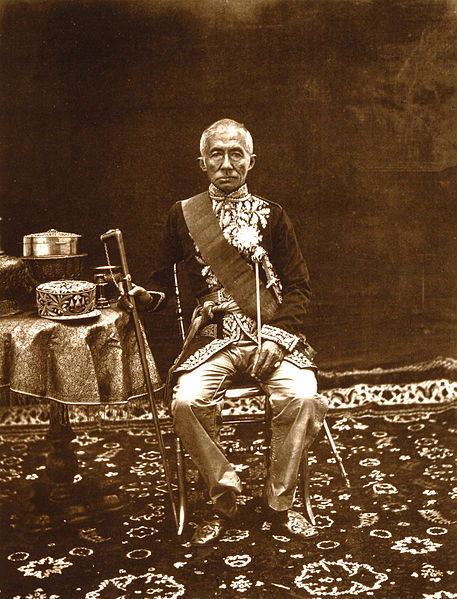
(Phra Bat Somdet Phra Poramenthra Maha Mongkut Phra Chom Klao Chao Yu Hua, known in English speaking countries as King Mongkut. Source.)
Nine years later, he wrote an article on the fish, officially describing them and naming them Macropodus pugnax. However, in 1910 Dr. Charles Tate Regan pointed out that a fish of that name already existed (a Betta native to the island of Pinang), thus renaming them Betta splendens. Dr. Regan was a British ichthyologist, naming many species in his lifetime. B. splendens has gone through several reclassifications since then.

(Interesting illustration of a long finned B. splendens circa 1931. Source.)
Bettas spread fairly quickly across the world at this point, making their way to Germany in 1896 and to the United States in 1910. All this time people had been breeding them for their aggression, but a few had bred them for colors.
So the current splendens was a super aggressive version of their wild counterparts, after so many years of breeding. They had also increased in size and new colors were showing up.

(Wild Betta splendens. Source.)
It wasn’t until 1927 did the first shipment of more colorful bettas arrived in the US. The pale bodied red finned variety was thought to be a totally different species, and named Betta cambodia. However, it was simply a color variation of B. splendens. But the color retains this name, any betta with a pale body and colored fins is known as a “cambodia”. Red fins are red cambodias, blue fins and blue cambodias, etc.
At some point down the line, long finned bettas began showing up. No one is entirely sure when or where they showed up at first, but there are a few theories. Modern splendens are likely hybrids between splendens and other closely related Bettas like imbellis and mahachai. In recent history, splendens have been crossed creating “dragon” bettas with thick iridescence covering most of their scales. Initially, they were bred with mahachai, however, those particular hybrids never took off the way splendensXimbellis ones did. Victoria Parnell-Stark is the pioneer of splendensXimbellis crosses, and essentially the first to create dragon bettas as we know them today.
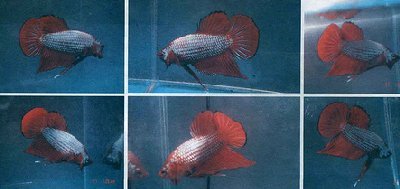
(An splendensXmahachai cross. Source.)
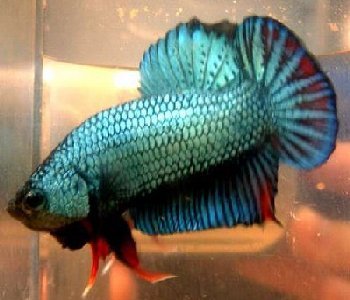
(The more popular splendens X imbellis. Source.)
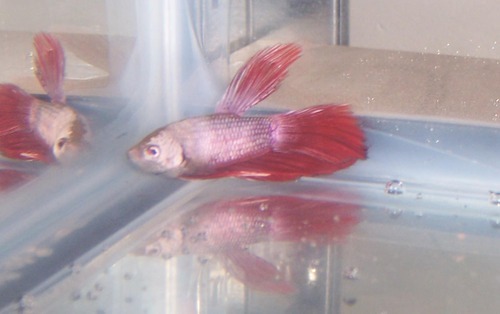
(And a red dragon delta, as we know them today. Picture mine.)
The rest is history, as they say. Bettas became intensely popular due to their bright colors and ability to be kept in small unfiltered volumes of water. However, this also lead to them being neglected beyond belief. Truths about their wild habitats were exaggerated, twisted into lies that could sell small tanks. Bettas have never been found in the footprints of animals, they do not get “scared” of being in large tanks, and they do not like dirty water. I debunk these myths and more here.
Bettas are a fascinating fish with a rich history, and it’s a shame it’s not know by most keepers.
Sources
Wikipedias Article on splendens
Wikipedias Article on Thailand
Wikipedias Article on King Mongkut
Plakat Thai, a wealth of information about Bettas.
mossmercury liked this
fooshfish reblogged this from irefusetoeven
dhdingo liked this
 that-crazy-goldfish reblogged this from scalestails
that-crazy-goldfish reblogged this from scalestails  irefusetoeven reblogged this from scalestails
irefusetoeven reblogged this from scalestails  irefusetoeven liked this
irefusetoeven liked this mushroomcaphat liked this
soilrockslove liked this
nonchalantasaurus reblogged this from iantojonesthebetta
 rawdogimus-prime liked this
rawdogimus-prime liked this michaelyew-archive liked this
tigerthebetta reblogged this from scalestails
pinesdemayo liked this
lochnessbutch liked this
tribetta reblogged this from scalestails
pa-ahana liked this
piercethesleepinghorizon2 liked this
haylinmakaye liked this
haylinmakaye reblogged this from scalestails
edwardjames-kenway liked this
betta-quirks reblogged this from fishbubbly-blog
fishbubbly-blog reblogged this from scalestails
fishbubbly-blog liked this
 bettascape reblogged this from thebettatales
bettascape reblogged this from thebettatales wild-oceans liked this
 trans4trams reblogged this from scalestails
trans4trams reblogged this from scalestails thebettatales reblogged this from scalestails
 trans4trams liked this
trans4trams liked this nkates liked this
maytheskitty liked this
funeralsforbuildings liked this
scalestails posted this
- Show more notes

